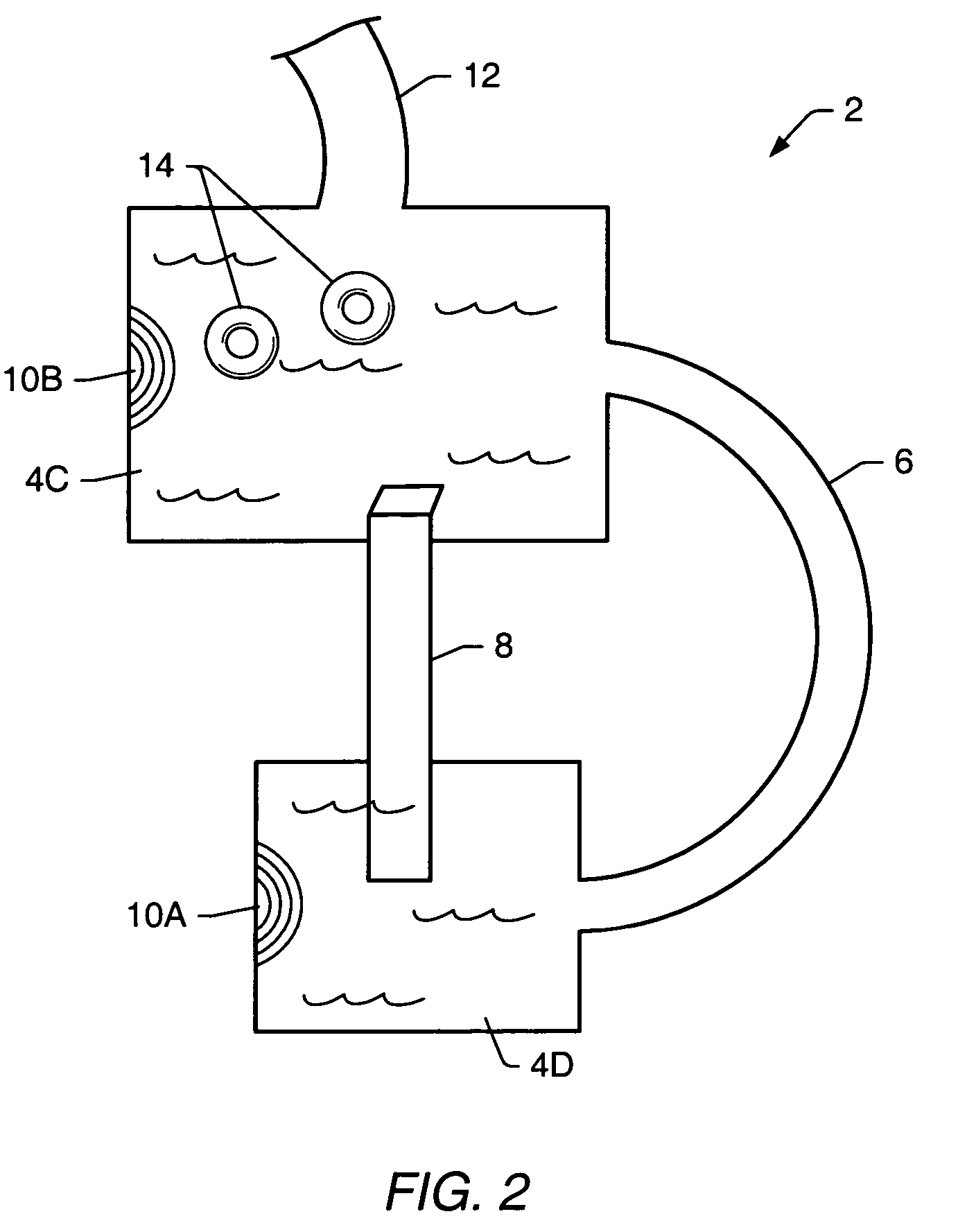Continuous water ride
a water ride and continuous technology, applied in the field of water transportation system, can solve the problems of limited throughput capacity, short duration of traditional downhill water rides, and long queue line waits, and achieve the effect of reducing or eliminating disadvantages and keeping riders cool
- Summary
- Abstract
- Description
- Claims
- Application Information
AI Technical Summary
Benefits of technology
Problems solved by technology
Method used
Image
Examples
Embodiment Construction
[0038] In some embodiments, a water amusement system (e.g., a waterpark) may include a “continuous water ride.” The continuous water ride may allow a participant using the continuous water ride to avoid long lines typically associated with many water amusement systems. Long lines and / or wait times are one of greatest problems associated with water amusement systems in the area of customer satisfaction.
[0039] Almost all water park rides require substantial waiting periods in a queue line due to the large number of participants at the park. This waiting period is typically incorporated into the walk from the bottom of the ride back to the top, and can measure hours in length, while the ride itself lasts a few short minutes, if not less than a minute. A series of corrals are typically used to form a meandering line of participants that extends from the starting point of the ride toward the exit point of the ride. Besides the negative and time-consuming experience of waiting in line, t...
PUM
 Login to View More
Login to View More Abstract
Description
Claims
Application Information
 Login to View More
Login to View More - R&D
- Intellectual Property
- Life Sciences
- Materials
- Tech Scout
- Unparalleled Data Quality
- Higher Quality Content
- 60% Fewer Hallucinations
Browse by: Latest US Patents, China's latest patents, Technical Efficacy Thesaurus, Application Domain, Technology Topic, Popular Technical Reports.
© 2025 PatSnap. All rights reserved.Legal|Privacy policy|Modern Slavery Act Transparency Statement|Sitemap|About US| Contact US: help@patsnap.com



